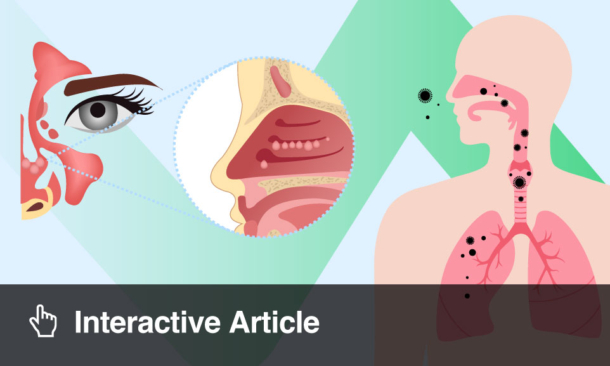Author: *Sümeyra Alan Yalım1
1. Afyonkarahisar Health Sciences University, Türkiye
*Correspondence to [email protected]
Disclosure: The author has declared no conflicts of interest.
Keywords: Allergic rhinitis, antibiotic allergy, biologics, chronic rhinosinusitis, epithelial barrier.
Citation: EMJ Allergy Immunol. 2025;10[1]:35-37. https://doi.org/10.33590/emjallergyimmunol/XEBS9209
![]()
REFRAMING ANTIBIOTIC ALLERGY: DELABELLING AS A STEWARDSHIP STRATEGY
Antibiotic allergy labels, particularly those involving β-lactams, remain prevalent, yet frequently inaccurate. EAACI Congress 2025 emphasised the growing global momentum toward structured delabelling protocols as a means to combat antimicrobial resistance. Experts underscored that >90% of penicillin allergy labels are unsubstantiated, leading to unnecessary broad-spectrum antibiotic use. Practical tools such as point-of-care risk stratification, direct oral challenges, and electronic medical record-integrated decision aids were discussed.1 These approaches not only streamline delabelling protocols but also reduce hospital length of stay, improve antimicrobial selection, and mitigate resistance patterns, particularly in high-risk populations such as oncology or immunodeficient patients.
During one of the plenary sessions, a poignant case was presented where systematic delabelling reduced second-line antibiotic use by 67% within a year, with no increase in adverse drug reactions. Another presentation from the UK NHS experience highlighted how integrating clinical decision support into electronic medical records significantly increased the uptake of direct oral challenge protocols.
The takeaway: delabelling is not merely an allergy issue; it’s a patient safety and antimicrobial stewardship priority, with measurable clinical and public health benefits.
THE NASAL EPITHELIUM: A CENTRAL PLAYER IN TYPE 2 INFLAMMATION
A major thematic focus this year was the epithelial barrier hypothesis in allergic and non-allergic diseases. Presenters delved into the intricate relationship between epithelial integrity and Type 2 immune responses. Data were presented showing that pollutants, viruses, and even topical medications can disrupt nasal epithelial tight junctions,2 perpetuating inflammation. Cutting-edge research explored biomarkers of barrier dysfunction and therapeutic targets such as IL-33 and thymic stromal lymphopoietin (TSLP).3 The evolving understanding of the nasal epithelium as a regulator, rather than a passive participant, holds promise for precision-based interventions.
BIOLOGICS IN CHRONIC RHINOSINUSITIS: PERSONALISING CARE FOR A HETEROGENEOUS DISEASE
The use of biologics in chronic rhinosinusitis with nasal polyps (CRSwNP) has rapidly transitioned from experimental to mainstream. EAACI Congress 2025 featured updates on anti-IL-4Rα, anti-IgE, and anti-IL-5 monoclonal antibodies, with particular attention to phenotyping and biomarkers that predict response. Specific endotypes, such as tissue eosinophilia, elevated periostin, or high baseline total IgE, were highlighted as useful in guiding biologic selection, particularly in patients with severe, refractory CRSwNP. In one session, it was noted that serum eosinophil counts >300 cells/μL and tissue IL-5 expression were associated with better responses to anti-IL-5 therapy, while patients with nasal polyps and coexisting asthma tended to respond better to anti-IL-4Rα agents.3 Discussions highlighted the need for real-world data and head-to-head trials to inform treatment algorithms, especially given the cost and heterogeneity of response to biologics.
A recurring theme was the importance of shared decision-making and long-term outcome monitoring.4 Given the chronic, relapsing nature of CRSwNP and variability in symptom burden and treatment adherence, patient engagement in therapy selection is vital. Current literature still lacks high-quality data on long-term comparative outcomes between biologics, and patient preference is increasingly recognised as a key driver of sustained adherence and clinical success.4 These gaps underscore the need for integrative care models that combine biomarker-driven personalisation with patient-centred approaches.
TAKE HOME MESSAGE
EAACI Congress 2025 reflected the allergy community’s pivot toward mechanistic insight, stewardship, and personalisation. From redefining antibiotic allergy to unveiling the active role of epithelial dysfunction in chronic inflammation, the sessions offered a glimpse into the future of airway disease management. As new tools and therapies emerge, implementation science and patient-centred integration will be crucial in translating innovation into clinical reality.





